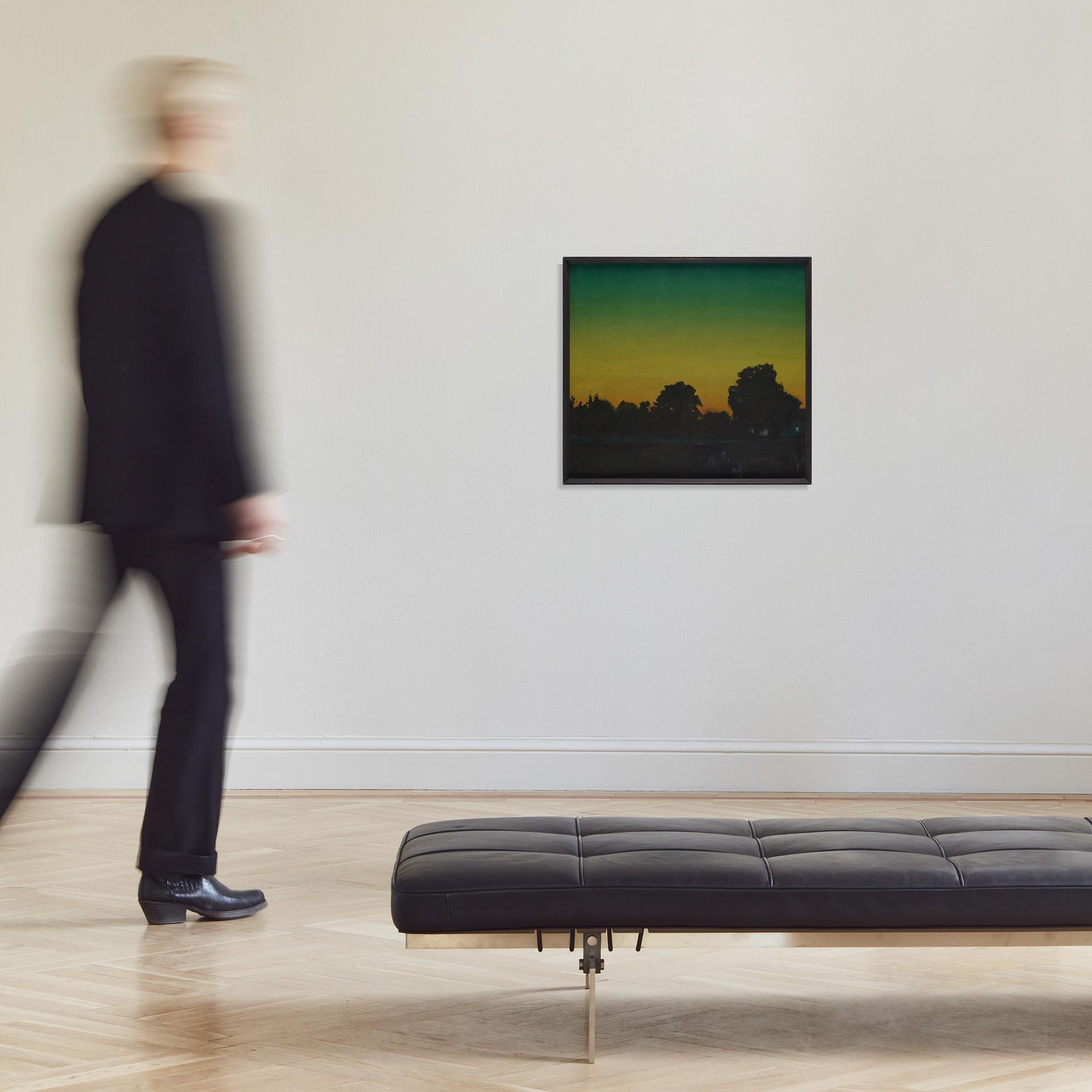Ola Billgren
"Himmel"
Signed Ola Billgren and dated -73 verso. Oil on canvas 65 x 71 cm.
Provenance
Galerie Belle, Västerås.
More information
The self-taught Ola Billgren found success in the mid-60s with his hyper-real style, inspired by movies, literature and photography, and with names such as Antonioni, Robbe-Grillet and the British photographer Bill Brandt as his role models. He also knew his art history and was influenced by old masters such as Titian, Rembrandt, Delacroix and Munch. Billgren’s painting has been compared to Dutch 17th century masters like, for example, Pieter de Hooch and Vermeer and w e find in his work the same sincerity, intimacy and stillness.
Billgren’s breakthrough came at Galleri Karlsson in Stockholm in 1966. In 1967 he exhibited under the title Här och nu [Here and Now] at Gävle museum. At this stage photorealism had become his battleground as he had broken off with modernism – no more art for art’s sake. “Everyone who looks at my paintings should get something from them”. With his painting he wanted to find “the unmade image”, in contradiction to the current trends in the arts of that time. The painting in the auction, Himmel [Sky], dated 1973, comes from an important period in the artist’s oeuvre, when many of his most significant works were executed. Billgren worked, like a baroque master, with the dramatic play between light and shade, whilst still clearly situating his imagery in a contemporary moment.
Artist
Ola Billgren was born in 1940 in Copenhagen but based his career in Sweden. Billgren was self-taught, having only been trained by his parents Hans and Grete Billgren. Ola worked within the mediums of graphic art, watercolour, collage, photography, film, and scenography. He was also an author and culture critic. Known for his versatility, Billgren cultivated a relationship between art and reality in his work.
During the 1960s, he transitioned from abstract expressionism to photographic realism. Over time, his paintings evolved into a fusion of abstract and photorealistic styles, resulting in romantic landscapes where he examined the interplay of light and color. Forms dissolved, and colors were reduced to monochrome, single-colored surfaces that were richly worked and varied.
In the late 1980s, he returned to urban environments in large cityscapes, often painted from a high perspective but maintaining the impressionistic approach seen in his landscapes. Ola Billgren's influence on recent decades of art has been significant. His work is represented in institutions such as Musée National d'art Moderne Centre George Pompidou in Paris and Moderna Museet in Stockholm.









































